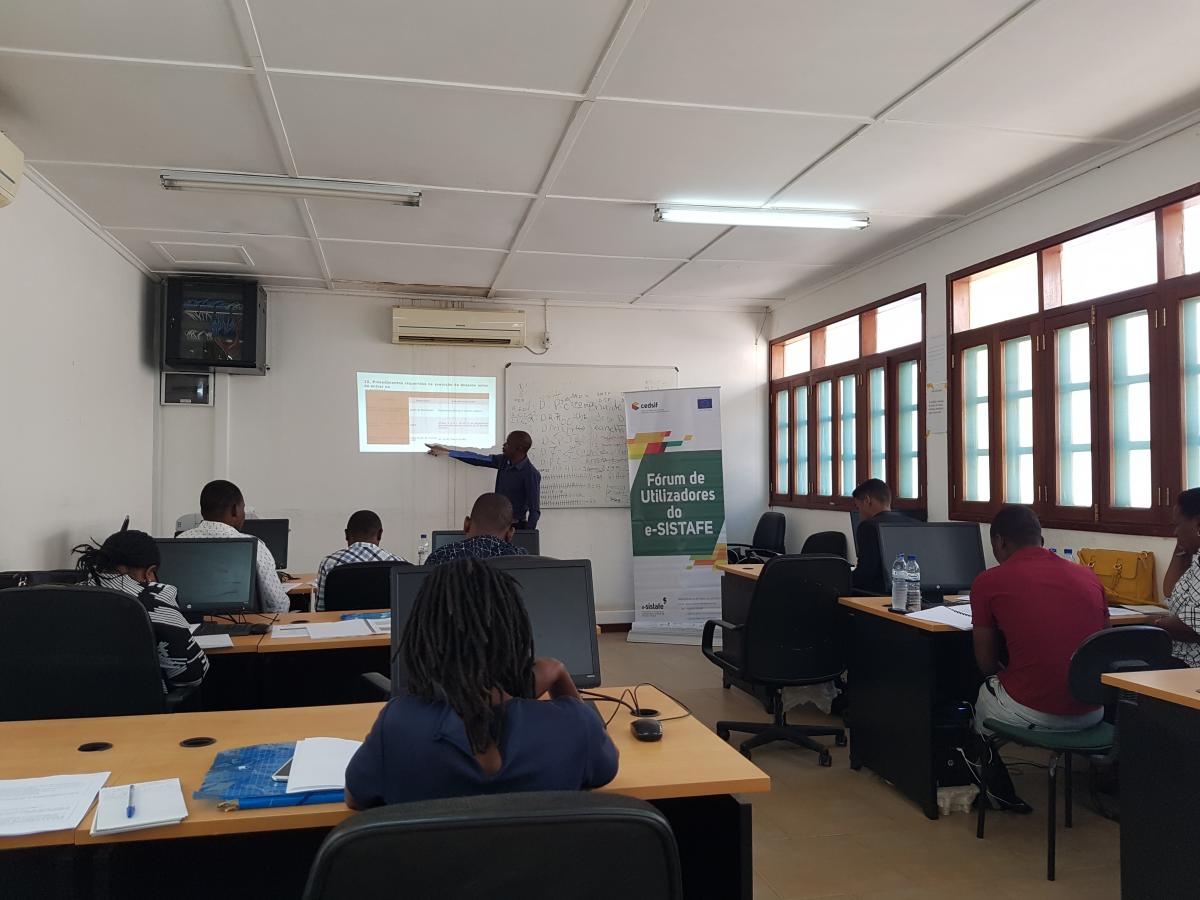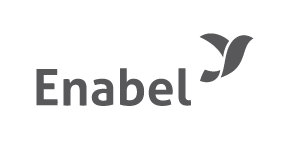Fostering decentralization of public financial management: e-SISTAFE workshop for accountants in the rural districts of Tete
Fostering decentralization of public financial management through capital and skills investment:
e-SISTAFE workshop for accountants in the rural districts of Tete
In the last week of August 20 participants responsible for accountancy in the
health sector in rural districts of Tete Province were brought together in the
provincial capital Tete for a training financed by Enabel’s GTAF II project.
The aim of the training was to provide the participants with a clear
theoretical and practical knowledge on the Integrated Financial Management
Information System, locally known as e-SISTAFE, the electronic system used for
managing the expenditure of public sector administration.
Enabel Mozambique and PFM
Since 2013, Enabel together with
the Government of Flanders has been implementing this project with the aim to
improve the Public Financial Management (PFM) in the Mozambican Ministry of
Health with the engagement of a technical assistant to GTAF, the working group
on audit and finances. This year the project has initiated its third phase and
will focus mainly on promoting comprehensive dialogues in the health sector,
supporting a sound financial management system in actual and future reforms and
further strengthening PFM aspects with a main focus on linking financial input
with service delivery, a link that is not clearly identifiable yet.
Ancient PFM regulations
The management of public finances
in Mozambique was until 2002 regulated by ancient regulations dating back to
the end of the 19th century (the “1881 Regulation on Public
Accountancy”, as well as the “1901 Regulation on Treasury”). In the late 90’s
it became clear that a reform and modernization of the financial administration
was indispensable and therefore imminent. In 2002, a new “System of Financial
Administration of the State” (SISTAFE) finally saw daylight through the Law of
9/2002 and the Decree of 23/2004, including a digital platform “e-SISTAFE”.
This system aims to bring more transparency in the accountancy processes, to
harmonize the rules and procedures, to bring together reliable information, to
implement a sound internal control and audit system and to allow an efficient,
adequate and correct financial-economic conduct of activities. The roll-out of
e-SISTAFE is currently still ongoing and is supported by Enabel’s project.
Decentralization of PFM: from UGB to UGE
Since 2002, SISTAFE governs the
way public institutions have to manage the expenditure and the roll out of
e-SISTAFE is taking place in several waves: it started with institutions at
central level and is expanding to all budget units. Budget units are “UGB” (Unidade
Gestora Beneficiária). Yet if a UGB is also a “UGE” (Unidade Gestora
Executória) it can execute its share of the budget independently.
Otherwise, the UGB depends to its hierarchical UGE to execute its payments.
Thus, the visibility in the budget, as well as procedures and categories of
payments, differ according to whether the institution is an executive or
a beneficiary public institution. The latter’s budget and expenditures
depend on and is clustered with the UGE. If the District Services of the Health
Sector (SDSMAS) is a UGB, it will have to rely on the District Secretariat
(which is the UGE) for its payments. Yet, the District Secretariat is also in
charge of other public services for that district (such as Service for
Education – SDEJT – and for Public Infrastructure – SDPI). The government of
Mozambique has undertaken several waves of decentralisation by creating the
conditions for entrusting the financial management to the institutions
responsible for one specific kind of service to be delivered. The Ministry of
Health – with modest Enabel support – targeted few UGB that are or will soon be
converted into UGE. From now on, they have to manage their own expenditure and
execute payments themselves.
Practical example
Participants to the course were very
positive about the decentralization process of PFM as it would make the payment
process easier. They reported that currently, many of the payment orders were
held pending by the UGE and therefore the Health UGB suffered delays in
payments. Indeed, the release of funds to a UGE is linked to the expenditure
performance: this implies that if one of the services is underperforming all
the other services will take the burden. For the sake of clarity, let us
suppose that in the month of March in Pandza District[1]
there are two payments to be done, one for the Pandza Rural Hospital and
one for the Pandza Primary School. Let us suppose that a supplier to the
Pandza Primary School is not issuing
the invoice for final liquidation of expenditure. The District Administration,
that is the UGE, can neither execute that expenditure nor apply for new
liquidity for the month of April, practically blocking all the payments of the
entire UGE due in April and thus also the payments for the UGB Pandza Rural Hospital. As targeted
institutions will soon become UGE, they will be shielded from problems with
other UGBs. In addition, they will receive more responsibilities and more
autonomy in relation to expenditures and budgeting.
Course content
In a first stage, the course
provided the participants with a clear theoretical background of SISTAFE about
its history, objectives, structure, financial regimes, budget planning,
execution procedures, ethical questions (such as pre-payments), etc. In light
of the decentralization process of PFM, the practical exercises were especially
of importance to the participants. Although most of them indicated to have
worked with the informatics platform e-SISTAFE in their daily work, the
transformation from UGB to UGE has brought many more new proceedings to be
executed by these financial accountants. The instructors showed them the
different procedures they will be responsible for from now on and which steps
they have to take for each one of them, as well as briefed them on the
classifying codes and how to consult the different reports in e-SISTAFE. The participants were very optimistic and
stated that the course successfully tackled the gaps they were confronted with
after the decentralization of PFM. They were confident that they now have sufficient
knowledge to successfully process all payments, from beginning to end, through
e-SISTAFE.
Skills and capital investment
The fostering of the
decentralization process of public financial management by Enabel’s GTAF phase
III project does not only consist of a skills development part through this
e-SISTAFE course. It also includes a part linked to capital investment, through
the installation of equipment in the targeted institutions. The equipment
consists of 3 working stations (required for the segregation of the functions
for authorising a payment) and a networking system so that the operator will
work in real-time in the e-SISTAFE which in turn is linked to the Single
Treasury Account.
PFM... For service delivery
The full scope of Public Finance
Management, however, is often forgotten. A sound PFM system ultimately aims at
providing an instrument to better organise and manage the service delivery
functions. Making the link between the former and the latter is a step too
often neglected, limiting the PFM scope is to merely transparency and
accounting. Nevertheless, a meticulously
filled out expense table where all expenditures are linked to functional and
programmatic classifying codes will provide a wealth of information: (a) on how
budget allocation are financing services and (b) on how to orient budget cuts
(or budget scale up), which implies reducing the level of services (or
increasing them), if the situation requires it. It would provide information to
the management on what the consequences on other services would be and how
budget policy decisions influence the delivery of public services, and vice
versa how changes in public service delivery can be traced back to budget
modifications.
All this information will allow
for a more informed decision on budget planning and execution. Hence, the
accounting system e-SISTAFE, has the potential to become a management tool, but
for now it seems that there is either no demand or interest or awareness with
managers and policymakers. An important role is assigned to the technical
assistant of Enabel’s GTAF III project in raising awareness to correctly use
e-SISTAFE not only as an accountancy tool, but also and foremost as a
management tool for service delivery*.
- Article written by Damiano
Stella and Anke Van de Velde
* For more technical information on PFM for service delivery,
we would like to announce that a technical analytical paper is currently being
written by the project, in order to better understand and deal with the link
between PFM and service delivery.
[1] Pandza is a youth slang used to refer to
Mozambique in general and originates in a popular song: https://www.youtube.com/watch?v=XIw1xDorB_w.
Latest news from this project
No news

